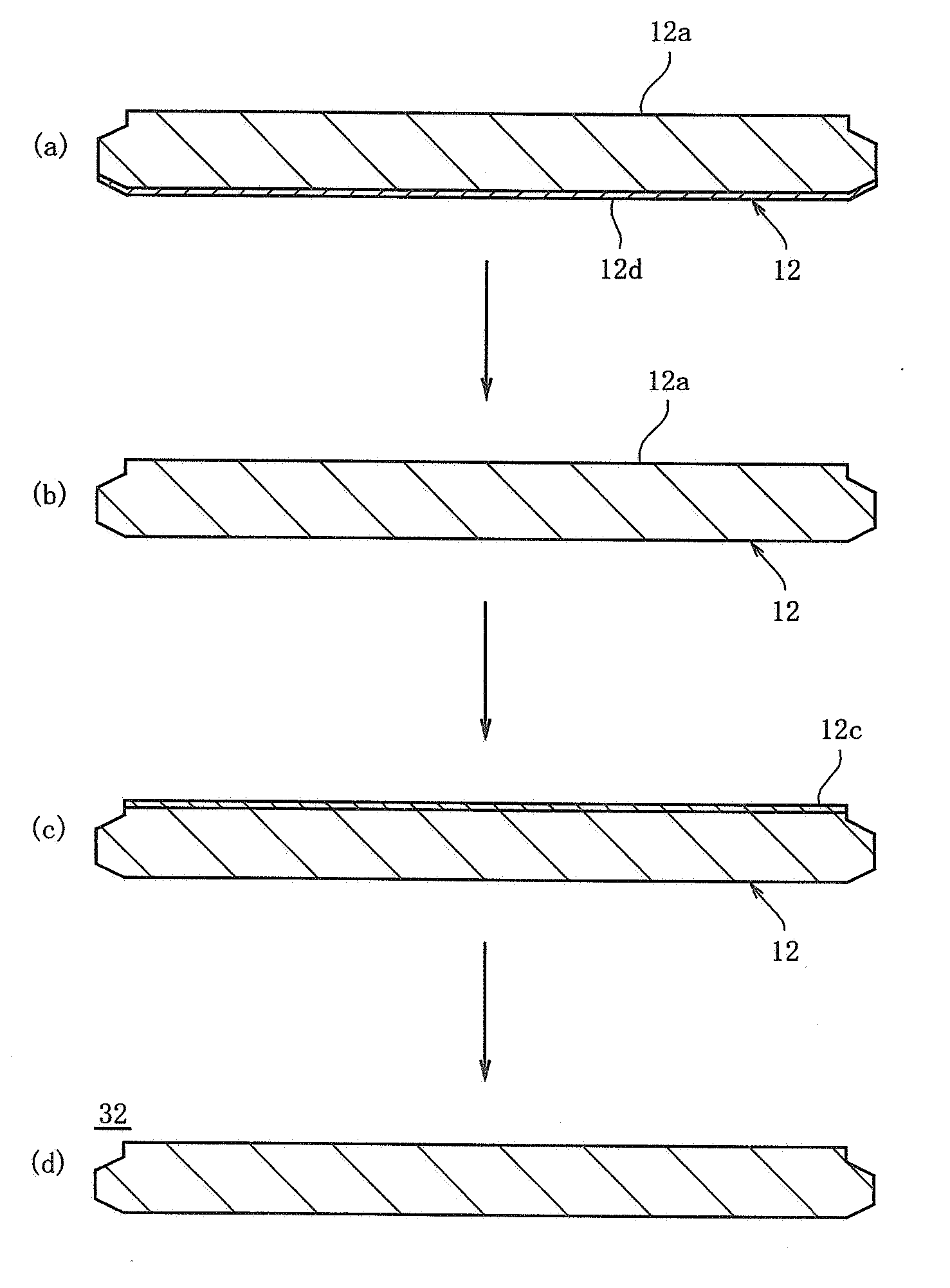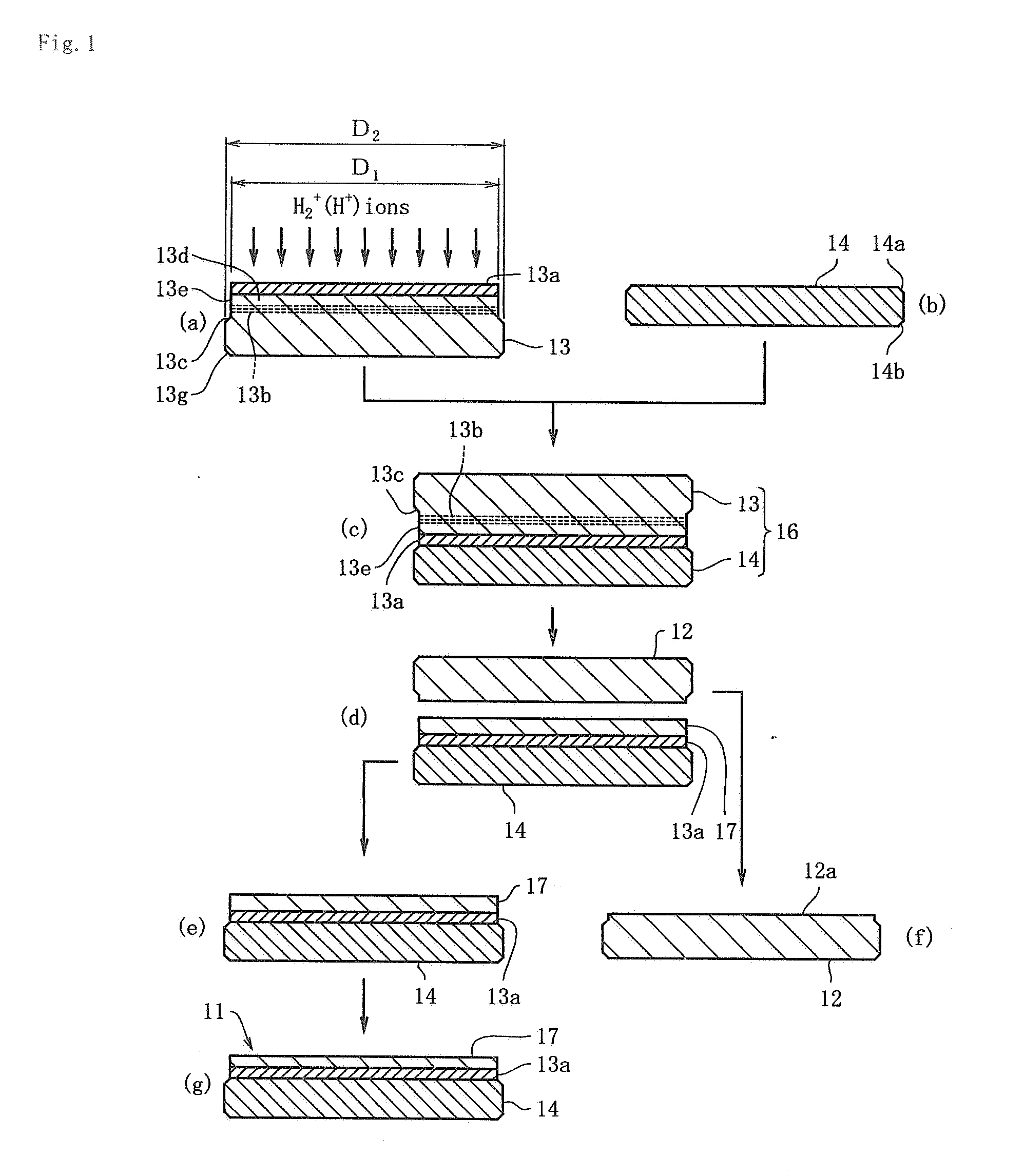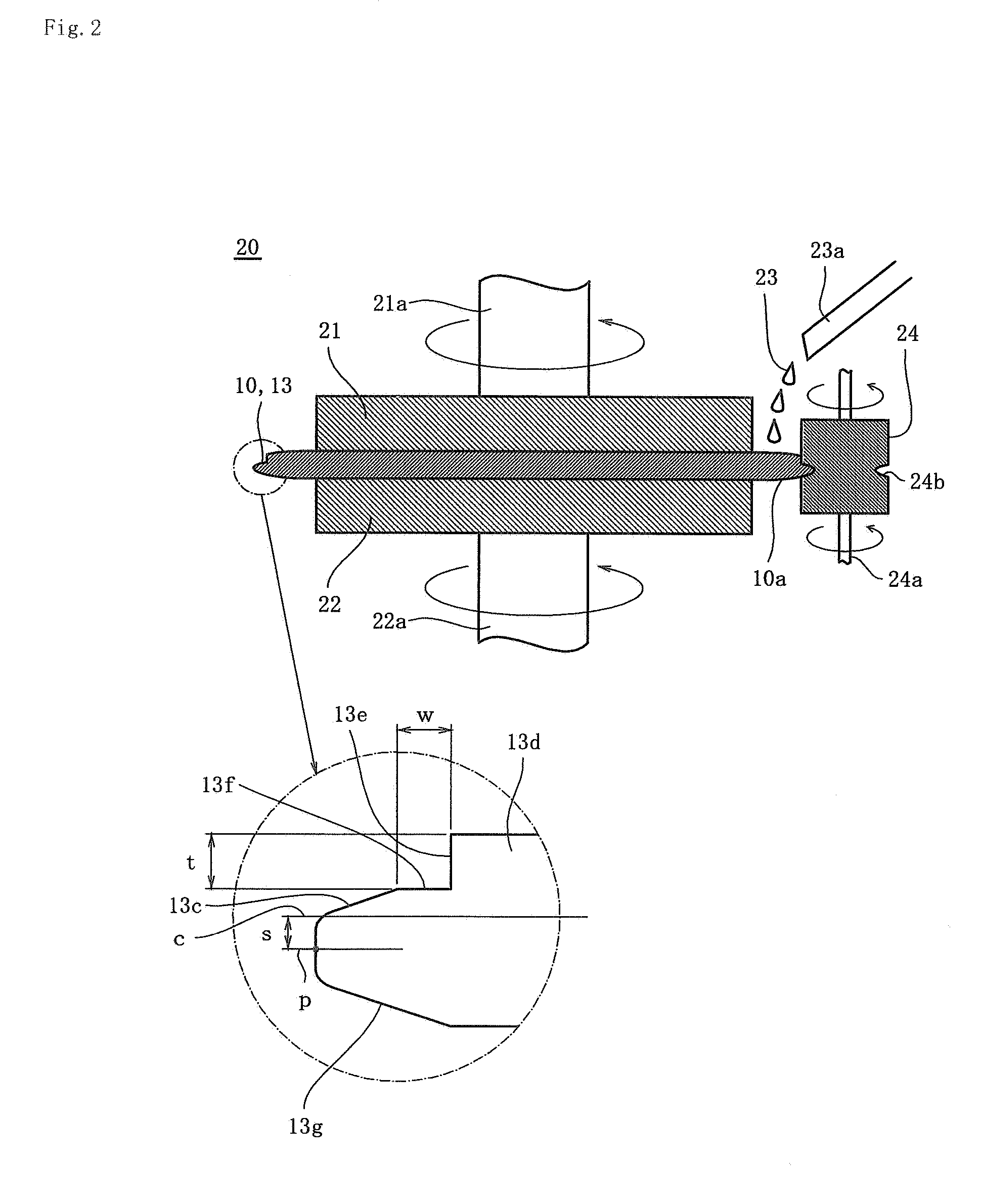Process for Regeneration of a Layer Transferred Wafer and Regenerated Layer Transferred Wafer
a layer transfer and regeneration technology, applied in the direction of grinding machine components, manufacturing tools, lapping machines, etc., can solve the problems of difficult use more time is required to regenerate surface roughness etc., to achieve the reduction of the processing time required for the regeneration of the layer transfer wafer, the effect of increasing the number of regeneration times and reducing the cost of the regeneration
- Summary
- Abstract
- Description
- Claims
- Application Information
AI Technical Summary
Benefits of technology
Problems solved by technology
Method used
Image
Examples
Embodiment Construction
[0032] Next, the preferred embodiment of the present invention will be described based on the drawings.
[0033] As shown in FIG. 1, a layer transferred wafer 12 is generated secondarily when producing SOI wafer 11. In order to produce the SOI wafer 11, as shown in FIG. 1(a), a semiconductor wafer 13 as a bond wafer and a support wafer 14 as a base wafer are prepared. In this preferred embodiment, these wafers 13 and 14 are produced by the Czochralski method, respectively, and they have the same diameter and the same thickness, and chamfered portions 13c, 13g, 14a and 14b are formed respectively in the periphery of both the main surfaces. These wafers 13, 14 are subjected to the RCA cleaning after polishing both the surfaces.
[0034] However, a main flat portion 13d is formed on one of the main surfaces of the semiconductor wafer 13, and the main flat portion 13d is formed so that it has a ring-shape step 13e on the periphery protruding from the chamfered portion 13c formed on the peri...
PUM
 Login to View More
Login to View More Abstract
Description
Claims
Application Information
 Login to View More
Login to View More - R&D
- Intellectual Property
- Life Sciences
- Materials
- Tech Scout
- Unparalleled Data Quality
- Higher Quality Content
- 60% Fewer Hallucinations
Browse by: Latest US Patents, China's latest patents, Technical Efficacy Thesaurus, Application Domain, Technology Topic, Popular Technical Reports.
© 2025 PatSnap. All rights reserved.Legal|Privacy policy|Modern Slavery Act Transparency Statement|Sitemap|About US| Contact US: help@patsnap.com



